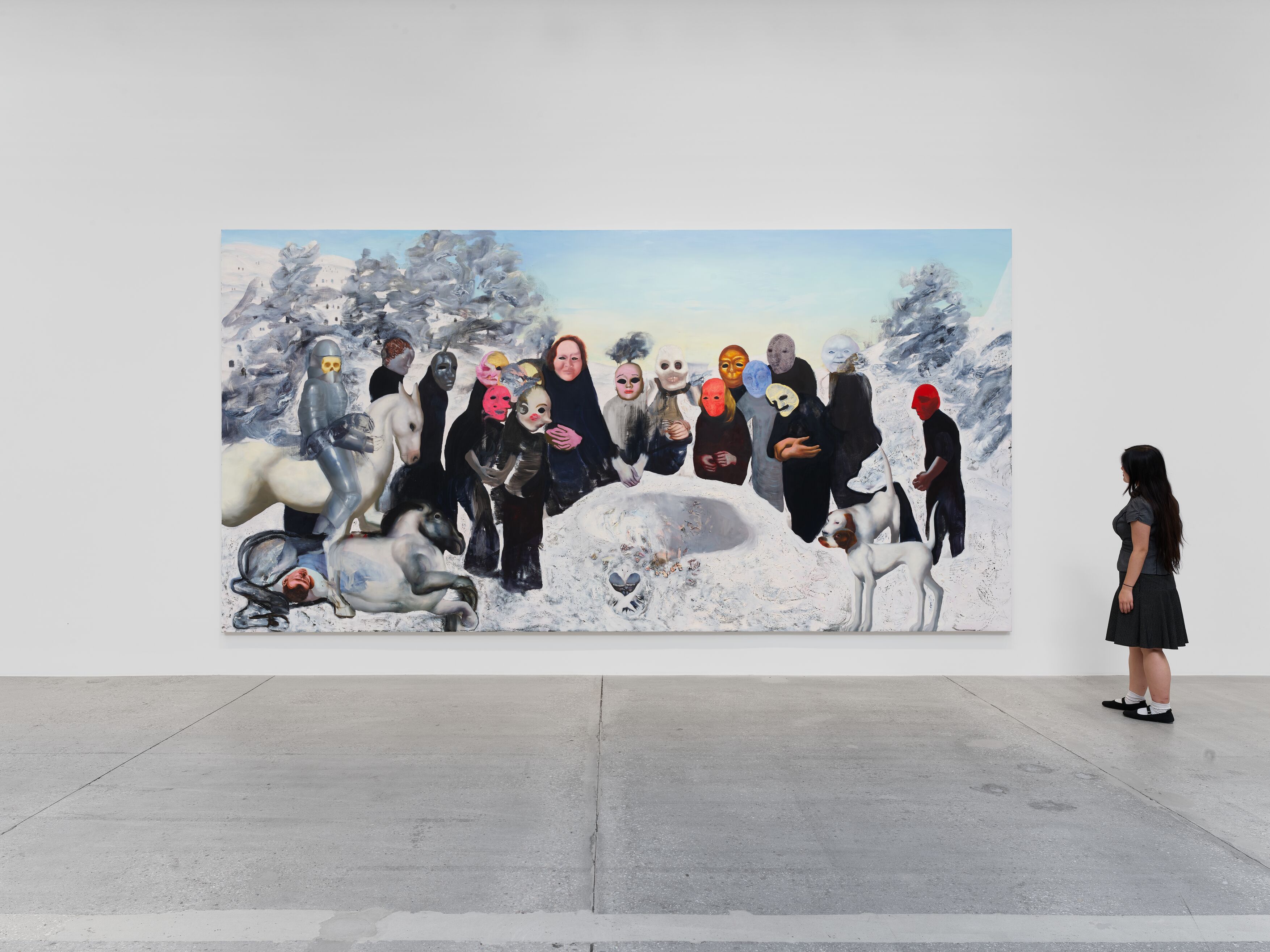It feels slightly odd to be writing about materiality when contemporary debate is inundated with Midjourney and DALL.E 2, artificial intelligence programmes which essentially render the becoming of art redundant. In however-many seconds, after however-few words, the software can produce the most sumptuous fantasy landscape, or the most disconcerting surrealist film set. In fact, there’s an entire online gallery devoted to its output; curated by ‘Fraud Monet’, the artist page spotlights ‘RAMbrandt’, ‘Fraction Pollock’ and ‘Forge Seurat’, amongst others.
Perhaps I’m too optimistic about these things, but I find it hard to see these virtual artists as a convincing threat. What AI art lacks is materiality; the aesthetic of the visceral which disturbs everyday comfortability. Art makes visible both the abject and the ordinarily inconsequential. It interrupts existence – or at least, the best art does – by drawing a thread between form and the body. It’s at this point that people might reject it, or tell you it’s crap. But to others, art’s ambiguity (impossible to replicate digitally) is its allure.

At The Approach in East London, Dutch painter Rezi van Lankveld and gallery director Emma Robertson have curated The sun rises under the pillar of your tongue, a group show which aims to capture the ‘poetics of form’: that elusive moment of art which relies on its materiality. The Approach – which is housed in a small gallery space above a Bethnal Green tavern (handy for openings) of the same name – has long foregrounded intergenerational group shows as part of its programme, and this is no different, albeit comprised of a selection which clearly forms a constellation centred around the work of van Lankveld. The result is the artist and curator’s dream dinner party line-up, spanning culturally renowned artists such as Alina Szapocznikow, Lynda Benglis and Enzo Cucchi, to newer names like Rinella Alfonso and Erika Verzutti.
It seems most obvious to begin my text by writing about van Lankveld, but actually, I think that it is Cucchi’s work which most clearly captures that unsettling moment at which art is at its best. Cucchi is known for his leadership of the Italian variant of Neo-Expressionism, Transavanguardia, which formed a reaction to minimalism and conceptualism, and reintroduced the figurative into painting and sculpture. BUCO DI CULO (2017) is a bronze rendition of a Rorschach inkblot test; revealing both of inner psyche and an organic, architectural quality in its three-dimensional form. Tar-like and formed of drips and streams, it is quite literally suggestive of crap, which would make sense since its title, according to Google Translate, roughly translates from Italian as ‘asshole’.

The rest of the show acts as more of a meditation: on van Lankveld’s own relationship with the canvas and the relationships she attempts to forge with the viewer, through abstraction and figuration. The exhibition’s title, The sun rises under the pillar of your tongue, is a Plath quote, appropriated from The Colossus (1960), a poem depicting grief. Standing alone, the line obtains a strangely optimistic quality. Regardless, like its mother text, it captures a circular link between the organic, the corporeal and the artistic; an anchor to abstraction.
In van Lankveld’s Pink Cloud (2020), I see a pomegranate and perhaps a shoulder, flanked by a red sky. Similarly to Cucchi’s BUCO DI CULO, Pink Cloud is uncomfortable and erotic, a trypophobic landscape. Van Lankveld’s work all seems to operate in this way, teasing form but granting only a limbo and tension which no wall text can relieve. The colour of my room (2022) is a dense synaesthetic landscape of hospital blue, and View (2022), which is more melancholy than its sketchy cousins, is made up of greyish blocks of colour, marbling poured paint suggesting factory chimneys or stormy clouds. Van Lankveld works intuitively: pouring, drying, scraping, adding, resurrecting, destructing, finding the figurative in the inadvertent becoming of a piece.
The late Polish sculptor Szapocznikow is an interesting inclusion, if only because her lampe-bouche (illuminated lips), Sculpture-lampe X (1970) is more explicitly figurative than the rest of the works on display. Szapocznikow’s renowned lamps are at first glimpse erotic – I used to say I’d love one in my (dream) mid-century LA living room – but they also belie stories of oppression, violence and the body as commodity. In a purely aesthetic sense, the lamp draws out the whispers of figurativism in the show’s more abstract works.

Contextually, all of these works could hang in limbo were it not for the inclusion of the young Curaçaon artist Rinella Alfonso, whose paintings most explicitly pull the relevance of poetic form into a contemporary socio-political landscape foregrounded by capitalism and violence. In the two works shown at The Approach, she focuses on representations of the Black female body, utilising motifs deeply rooted in her culture. Hair becomes the marker of existence; the object of sole focus. In We are here, we are pierced (2022), Alfonso uses hair as medium, flanked by a depiction of heavily pierced ears, whose jewels form breaks of light. Two corn in a row (2022) replaces the human figure with two braids lying across the silhouette of an armchair. Through painting, Alfonso’s everyday icons are transformed and invested with significance.
Without being tied to any concrete theme or cause, The sun rises under the pillar of your tongue is a homage to the experiential nature of art’s materiality, and its irreplaceability by machine or code alike. As Joan Didion wrote in Salvador (1983), “our favourite people and our favourite stories become so not by any inherent virtue, but because they illustrate something deep in the grain, something unadmitted”; a depth which originates in nuance. There is an enduring resonance of art as gut reaction, art as knowing and unknowing, and fundamentally, art as becoming.
The sun rises under the pillar of your tongue runs at The Approach until 18th February 2023.





